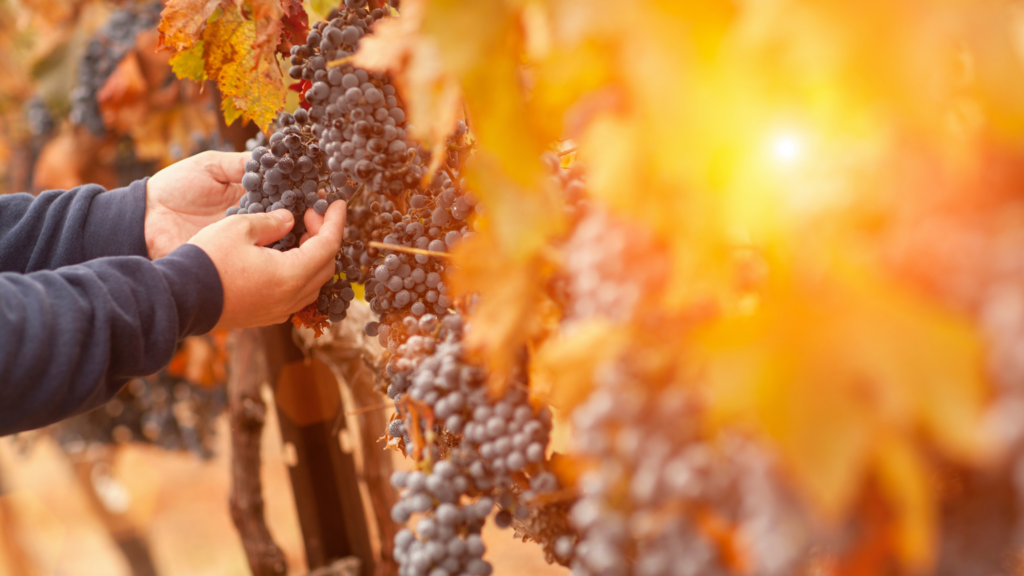Ultimate Guide to Wine Tasting Etiquette
Want to master wine tasting? Start with the basics of etiquette: arrive on time, avoid strong scents, and engage with the host. Use techniques like the Five S’s – See, Swirl, Smell, Sip, and Savor – to fully appreciate each wine. Stay considerate of others, manage your alcohol intake, and always hold your glass by the stem. After tasting, consider buying a bottle or joining a wine club to continue your journey. Here’s everything you need to know for a smooth and enjoyable wine tasting experience.
7 Essential Wine Tasting Etiquette Tips
Getting Ready for a Wine Tasting
A little preparation can make your wine tasting experience much more enjoyable. It all comes down to doing your homework, dressing appropriately, and managing your timing.
Research the Winery or Event
Take some time to learn about the winery or event you’ll be attending. Look into their history, wine offerings, how the event is structured, and any fees involved. Knowing about their wines and production methods can help you connect with the experience on a deeper level.
Dress and Personal Preparation
Stick to smart-casual attire, and avoid wearing strong fragrances. Why? Because aromas play a huge role in wine tasting. As Tour de Vine by Heli puts it:
“A big part of the wine tasting experience is the aromas, and wearing a strong perfume or aftershave is the fastest way to spoil that element of the tasting for yourself and others.” [3]
Stay hydrated, wear comfortable shoes, and skip the cologne or perfume to fully enjoy the experience.
Be Punctual
Aim to arrive 5-10 minutes early. This gives you time to settle in, ensures you don’t miss anything, and shows respect for the host and other participants. Being on time also allows you to enjoy the tasting at a relaxed pace.
With these steps, you’ll be ready to dive into the tasting itself.
Wine Tasting Techniques
Once you’ve prepared, these techniques will help you truly engage with each wine’s profile while keeping proper etiquette in mind.
1. The Five S’s of Wine Tasting
The Five S’s are a simple yet effective approach: See the wine’s color against a white background, swirl it to release its aromas, smell deeply to identify its notes, sip to taste and engage your palate, and savor the finish to appreciate its length and intensity.
“As for technique, one that we find particularly useful is called ‘The Five S’s,’ which stands for See, Swirl, Sniff, Sip, and Savor.” – JUSTIN Winery [1]
2. Using Spittoons
Spittoons are a must when tasting multiple wines. They help you pace yourself and stay sharp. Use them discreetly by holding them close to your mouth to prevent splashing. Being comfortable with this practice not only shows professionalism but also keeps your senses sharp throughout the experience.
3. Cleansing Your Palate
A clean palate is key to accurately evaluating each wine. Simple palate cleansers can help reset your taste buds between tastings.
| Palate Cleanser | Purpose |
|---|---|
| White Bread | Absorbs lingering flavors |
| Sparkling Water | Refreshes and neutralizes |
| Plain Crackers | Provides a neutral base |
| Room Temperature Water | Preserves sensitivity |
“I know I’m experiencing fatigue when I start questioning what I’m smelling and tasting. That means it’s time to step away for a few minutes and drink some water. A little break gives my nose and palate a minute to reset.” – Laura Oskwarek, Napa Valley Winemaker [2]
sbb-itb-526cef7
Tasting Room Behavior
When visiting a tasting room, knowing how to behave is just as important as refining your tasting skills. A little etiquette goes a long way in creating a great experience for yourself and others.
Talking to the Sommelier or Host
Having a conversation with the sommelier or host can add depth to your visit. Ask questions about the wine’s production process, flavor profiles, or the winery’s history to gain more insight.
“Engaging in a respectful and open dialogue is crucial. Asking the sommelier for a wine that matches your taste profile can lead to a more personalized and enjoyable experience.” [1]
Respecting Other Tasters
Being considerate of others ensures everyone can enjoy the experience. Speak at a moderate volume, avoid wearing overpowering scents, and be mindful of your surroundings when taking notes or photos. Also, hold your glass by the stem – this keeps fingerprints off the bowl and prevents your hand from warming the wine.
Tips for mindful behavior:
- Skip strong perfumes or colognes.
- Step away from the counter when jotting notes or snapping photos.
- Wait for a pause in conversations before asking staff questions.
- Always hold your glass by the stem.
Managing Alcohol Intake
Enjoying wine responsibly is key to appreciating its flavors without overindulging. A few simple steps can help you stay in control:
| Timing | What to Do |
|---|---|
| Before Tasting | Have a light meal to prepare. |
| During Tasting | Alternate wine with water. |
| Throughout | Use spittoons as needed. |
Using a spittoon is completely acceptable, especially at professional tastings. It allows you to sample multiple wines while keeping your senses sharp and showing respect for the experience.
Once you’ve mastered tasting room etiquette, you’ll be ready to make the most of what comes next in your wine journey.
After the Tasting
Once you’ve enjoyed the tasting room experience, it’s important to wrap up your visit with care and consideration.
Buying Wine and Joining Clubs
Purchasing wine after a tasting is a great way to take a piece of the experience home. Many wineries offer deals on the bottles you’ve sampled. Joining a wine club can also be a great next step, offering perks like access to exclusive bottles, personalized shipments, and resources to expand your wine knowledge.
“The goal of our wine club is not to replace buying wine; instead, we want to introduce you to wines you will love.”
Giving Feedback
Sharing your thoughts with the winery can be incredibly helpful. Highlight the wines you enjoyed most, discuss anything you found interesting, and provide constructive comments. This feedback not only supports the winery but also strengthens your connection to the winemaking process.
Safe Travel Home
Ensuring a safe trip home is crucial, especially after multiple tastings. Plan your transportation in advance, as some wine regions may have poor cell service or challenging roads. Here are some options to consider:
| Service Type | Details |
|---|---|
| Destination Drivers | A professional drives your vehicle |
| Ride-sharing | Services like Uber or Lyft, if available |
| Group Tours | Includes pre-arranged transportation |
Conclusion: Wine Tasting Mastery
After completing your tasting journey, take some time to reflect on what you’ve learned and think about how to keep improving your skills. Becoming skilled at wine tasting involves preparation, technique, and respect for the craft. As the Petoskey Wine Region puts it:
“Wine tasting is not just about sipping on a glass of wine; there is an art form that comes to play with etiquette rules” [1]
The key to enjoying and appreciating wine lies in mastering the basics. Techniques like the Five S’s guide you through the sensory process, while practical tips – wearing smart-casual attire, opting for comfortable shoes, and avoiding strong fragrances – ensure you’re ready for any tasting setting.
If you’re interested in exploring wine regions around the world, services like Travel With Glen make planning easy. Their Premium Travel service offers personalized itineraries and expert advice, so you can focus on tasting while they handle the logistics.
| Aspect | Key Considerations |
|---|---|
| Tasting Technique | Hold the glass by the stem, use spittoons when necessary, and keep your palate fresh. |
| Social Elements | Interact with pourers, be considerate of other tasters, and drink responsibly. |
Each tasting experience helps you refine your skills, broaden your understanding, and discover new wine styles. By following these principles, you enhance your personal enjoyment and contribute to the shared tradition of wine appreciation. Every visit becomes an opportunity to learn, connect with wineries and fellow enthusiasts, and deepen your connection to wine culture.
FAQs
How should beginners taste wine?
Use the Five S’s: See, Swirl, Smell, Sip, and Savor. Start by observing the wine’s color and clarity. Swirl it gently to release its aromas, then take a moment to smell it. When sipping, let the wine linger on your palate to pick up its flavors and textures. This step-by-step method helps beginners understand a wine’s characteristics while learning proper tasting habits.
What are the basics of wine tasting etiquette?
To ensure a proper wine tasting experience, follow these tips:
- Hold the glass by the stem to prevent warming the wine or smudging the bowl.
- Cleanse your palate with water or neutral snacks between tastings [4].
- Engage with the host by asking questions, but be mindful of others in the group.
- Use spittoons to avoid overindulging during multiple tastings.
“Holding it by the bowl not only means you’ll get fingerprints on the glass that obscure your view of the wines, but it also impacts the temperature of the wine, which hinders your ability to taste it” [3].
![]()










